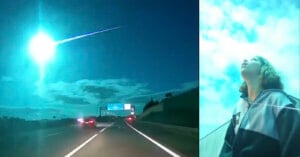
Bright Green Meteor Serendipitously Captured by Cameras in Spain and Portugal
An unexpected meteor lit up the skies across Spain and Portugal last weekend with the bright green fireball serendipitously caught on camera.

An unexpected meteor lit up the skies across Spain and Portugal last weekend with the bright green fireball serendipitously caught on camera.
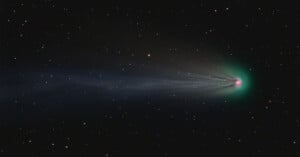
Norwegian astrophotographer Jan Erik Vallestad captured beautifully detailed photos of the city-sized comet 12P and, thanks to special image processing techniques, revealed a fantastic spiral formation surrounding the comet.
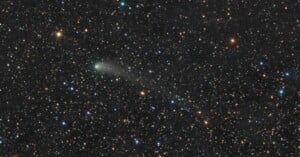
Scientists are calling on astrophotographers to capture a comet's broken tail and keep the Earth safe from the Sun.
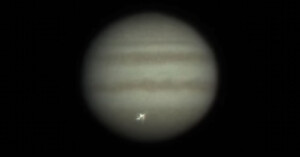
An amateur astrophotographer captured a rare fireball hitting Jupiter marking one of the brightest flashes ever recorded on the planet.
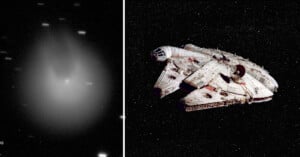
A comet in the night sky has unexpectedly brightened 100-fold and grown swept-back horns so it resembles the Millennium Falcon -- the fictional starship from the Star Wars movies.
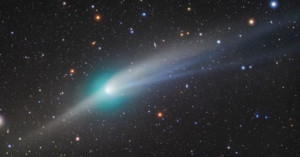
An astrophotographer has put together an awesome timelapse video of the green comet that passed through the solar system this past month.
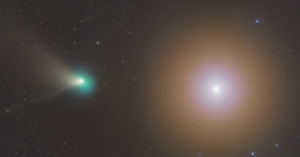
Two astrophotographers avoided a close encounter with a coyote in the Las Vegas desert as they captured a stunning image of a green comet and Mars together.
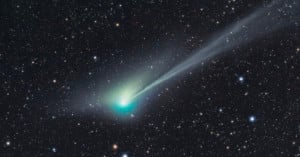
An astrophotographer has imaged the long-traveling comet that is currently making passage through the solar system, perfectly capturing its broken tail.
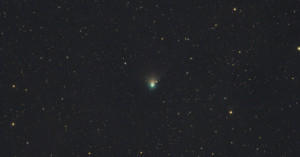
A stunning green comet will be visible from Earth in the coming days, even with the naked eye, giving photographers an opportunity to capture the comet that won't appear again for another 50,000 years.
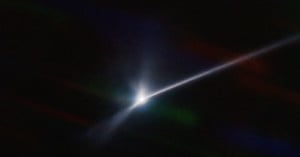
After NASA successfully crashed a spacecraft into Dimorphos last week, the asteroid now has a 6,000 mile-long tail made of dust and debris.
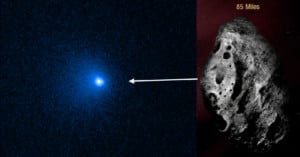
NASA's Hubble Space Telescope has captured the largest icy comet ever observed by astronomers. With a diameter of about 80 miles across, it is 50 times bigger than most known comets and it is headed directly towards Earth.

As Comet Leonard whizzed by Earth during Christmas festivities on its journey through the Solar System, photographer Andrew McCarthy went out into his backyard and captured incredible photos of the colorful "Christmas Comet."
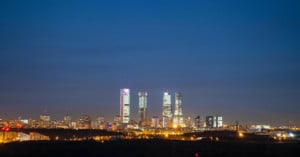
Last week saw the last few days to see and photograph Comet Leonard after sunset at the horizon where I am located in Spain, and when my fellow photographer Javier Martinez Moran asked me to join him in an attempt to catch the comet passing behind the iconic Four Towers of Madrid, I couldn’t say no!
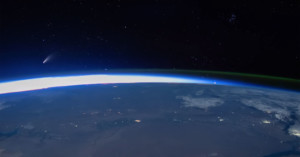
As photographers across the world are trying their hands at shooting Comet NEOWISE before it's gone for the next 6,000 years, astronauts onboard the ISS have a nice view of the comet that isn't obscured by Earth's atmosphere. Here's a 7-minute real-time video showing what NEOWISE looks like from about 254 miles above our planet's surface.
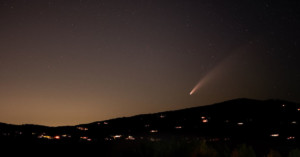
Earlier this week, I brought my Sony 70-200mm lens and drove only about 15 minutes away into Bortle Class 4 skies. What’s really exciting is that I was shooting towards Salt Lake City and the sunset, and still the image turned out remarkably well among all the light pollution and sunset in that direction!
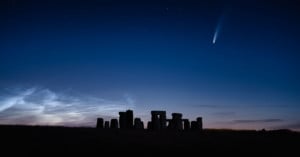
The comet C/2020 F3 (NEOWISE) has arrived in the night sky here in the northern hemisphere, delighting skywatchers and photographers alike. With planning, patience, and clear skies, you can capture an unforgettable image of this celestial event.
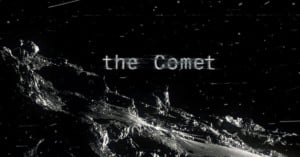
From 2014 to 2016, the European Space Agency's Rosetta spacecraft followed the comet Churyumov-Gerasimenko (67p) around space: collecting scientific data, sending a probe to its surface, and capturing some 400,000 photographs of the comet. This cinematic video was made from those photos.
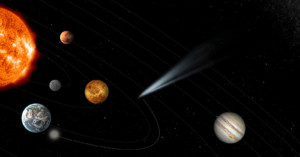
The European Space Agency (ESA) has announced a new mission that will have the goal of intercepting a comet with a special composite spacecraft in order to shoot photos of it.
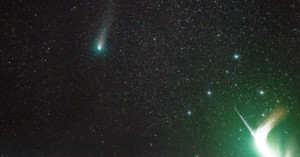
Montreal-based photographer François Guinaudeau went out a couple of nights ago to shoot Comet 21P/Giacobini-Zinner during the Perseid meteor shower. As he was capturing photos of the comet for stacking, a shooting star flew into the frame and exploded near the comet. Above is one of the photos that resulted.
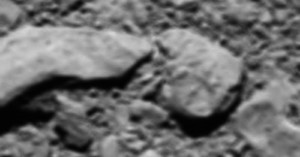
On September 30th, 2016, the European Space Agency ended the Rosetta space probe's mission by crashing it onto the comet that it had been orbiting for two years. It's been over a year now, but scientists just discovered that Rosetta had sent a surprise final close-up photo of the comet's surface just before impact.
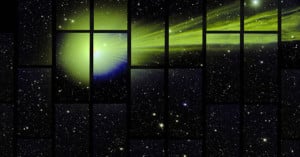
Until the 3.2-gigapixel LSST camera is launched in Chile, the 570-megapixel Dark Energy Camera (also in Chile) is the world's most powerful camera. While photographing the southern sky recently to study the nature of dark energy, operators of the telescope camera accidentally captured the photo above showing Comet Lovejoy.
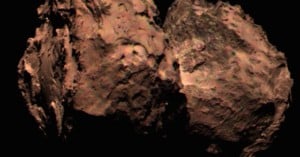
Given Comet 67P is, after all, a rock, and given that gray rocks are not uncommon, you would be forgiven for thinking that the photos of the comet that we've seen thus far were in color. That, however, is not the case. What you're seeing above is actually the first true color image of Comet 67P taken by the ESA's Rosetta spacecraft.
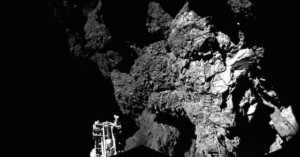
Human kind did something incredible yesterday: we landed something on the surface of a comet. After a 10 year journey to Comet 67P/Churyumov–Gerasimenko, Rosetta released its lander Philae, which arrived on the comet's surface, bounced around a bit because of a malfunction, and then sent back the very first photo from the surface of a comet.
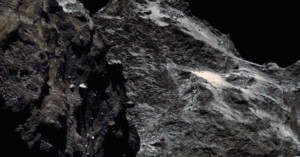
On September 5th of this year, the OSIRIS imaging system aboard the European Space Agency’s Rosetta Orbiter snapped one of the closest looks at a comet that we’ve ever seen. Roughly 38.5 miles from the surface of Comet 67P, the photograph captured an incredible amount of detail, even showing the boulders on the surface of the comet.
After the original black and white image was published though, Flickr user 2di7 & titanio44 decided to bring the image to life even more by using obtainable information about Comet 67P to colorize it to the best of his or her ability. You can see the resulting image above.
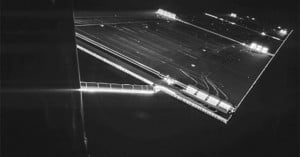
Here's an amazing "selfie" photograph that's literally out of this world. It was captured a couple of days ago by the Rosetta mission, which is studying a comet over 250 million miles away from Earth on behalf of the European Space Agency (ESA).
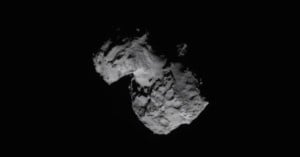
We've never wondered what it's like to approach a comet... just never crossed our minds. The ESA, on the other hand, spent many years wondering as the Rosetta spacecraft made its way towards the Comet Churyumov-Gerasimenko; and at the beginning of this month, they got to see it happen first-hand.
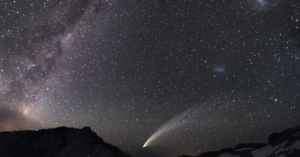
We've found reason to share Czech astrophotographer Miloslav Druckmüller's breathtaking work once before when we showed you his composite of a total solar eclipse. Now he's back with another composite image that shows a nightscape the likes of which you've probably never seen before.
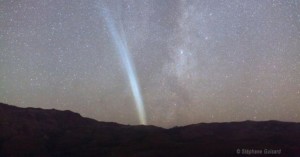
Astrophotographer Stéphane Guisard captured this time-lapse video showing …